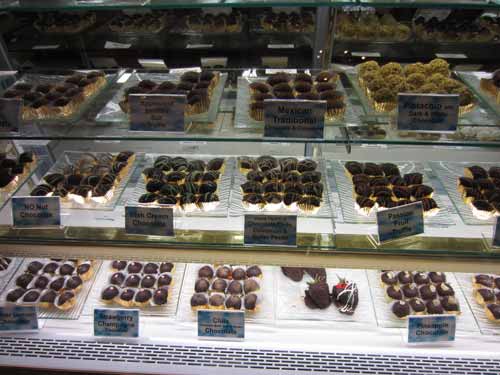We took a tour of the capitol building, then spent a bit of time ourselves looking at the over 650 pieces of artwork on display.

This building is the fourth state capitol and was built in 1966. The original capitol, Palace of the Governors, was built in 1609 and is now a museum. New Mexico is the fifth largest state but only has two million people.
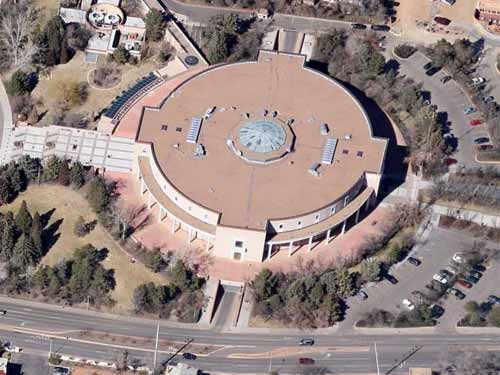
Also known as the Roundhouse, it was built in the shape of the Zia sun symbol, which was inspired by a design found on a 19th century water jar from the Zia Pueblo. The circular sun has with rays in four directions. This important number represents a wide range of things: the four directions, the four seasons, the four times of day, the four stages of life, etc.

The Zia symbol has been the state flag since 1925. The red and gold represent Queen Isabella de Castile and old Spain.
The tour started downstairs in the central rotunda. It measures 49 feet in diameter, has the state seal inlaid in the floor, a skylight 60 feet overhead, and a ring of flags.

Unlike most capitol buildings, this one doesn't have a dome. But it does have a lovely skylight. The pattern represents an native basket weave. Blue is for the sky; pink is for the earth.

There were 34 flags... for each of the state's 33 counties and one state flag.

New Mexico became a state in 1912. The state seal has two eagles... a bald eagle holding the arrows (for the US) and the Mexican harpy or brown eagle sitting on a cactus eating a snake (for Mexico). The motto "Crescit eundo" translates at "It grows as it goes."

Turquoise is the official state gem.

There were apparently a lot of interesting state symbols... such as a state cookie or state aircraft. We were even asked the 'state question' which was " Red or green?" in reference to what kind of chili would you like on your food. The answer... Christmas (which means a mixture of both)!
It got a bit confusing because the basement was the first floor, this entry level was the second floor, and what would normally be called the second floor was labeled as the third floor. That out of the way... The house and senate chambers were on the first floor but we couldn't visit them here. But there were viewing galleries on this floor where we could.

This is the view from the House gallery, overlooking the chamber floor. The only difference between the two rooms is the number of chairs... 70 in the House of Representatives and 42 in the Senate. Members are not paid a salary (only transportation and a couple other direct costs), so anyone who does this job has to really, REALLY want to be here.
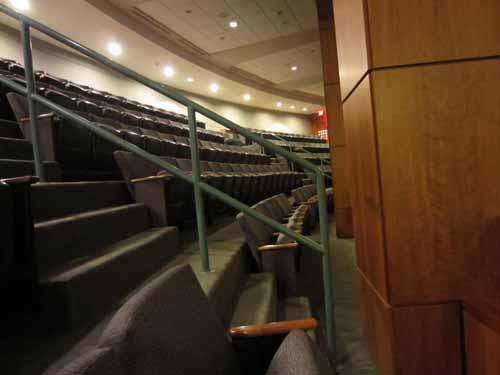
The gallery
On the third floor were committee rooms and offices. The top floor (the third... no fourth) was for the governor as well as a natural history museum. We were shown a few specific pieces of art, then left on the top floor to enjoy a leisurely exploration down.

Art lined the hallways.


Santos de Nuevo Mexico (Saints of New Mexico), 1995 by Charlie Carrillo, starting with the Franciscan monks who first colonized the area in 1598
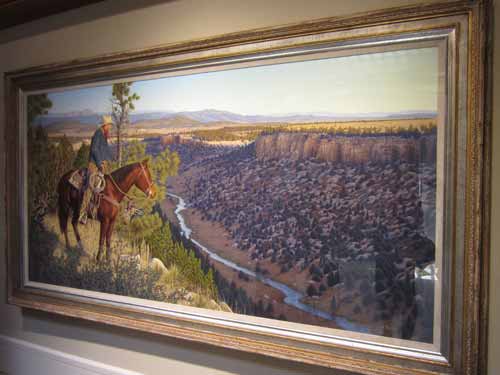
The Simple Pleasures of New Mexico, 1992 by Gary Morton. The cowboy is overlooking the Gallinas River (which is translated as Chicken River... actually named after the wild turkeys in the area, but since the people had never seen these types of birds before, they just picked the next closest thing).

The buffalo was created by Holly Hughes in 1992 and took six years to make.


Northeast of Mount Taylor, 2004 by Jim Bagley, shows a lovely rainstorm.

The Heart Gallery was dedicated to the foster children of the state. This 10-year-old girl, Francis, ended up being adopted by the very woman who took this photo, Jackie Mathey.
The natural history exhibit was called Traces in Time and focused on evidence of prehistoric animals and ancient cultures.

The arthropleura was a rather big bug!
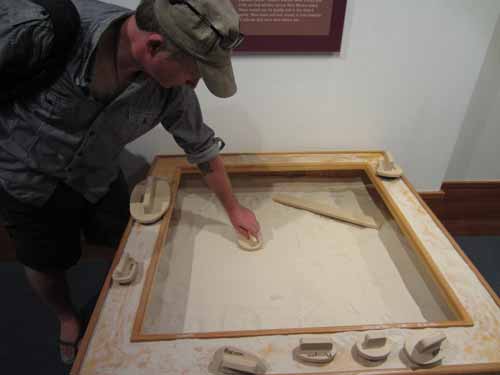
Making porcupine tracks in the sand

The Sun Dagger was an exhibit in archaeoastronomy. A thousand years ago, the ancestral Puebloans of that area (the k'yakwebitsulliya:w'a or The people who lived in a circular house) studied the heavens. Their architecture remains in Chaco Canyon, revealing an understanding of complex geometry related to celestial events. The Sun Dagger is a calendar consisting of three rock slabs leaning against a cliff. This digital display showed the changing patterns of the sun and stars in relation to the rocks.
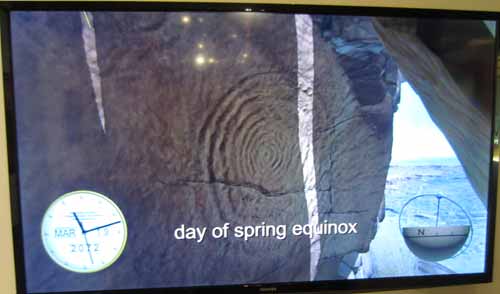
Our next stop was the San Miguel Mission, the oldest active church in the US... built in 1610, destroyed in 1640, rebuilt in 1645, destroyed in 1680, rebuilt in 1710 - a tenacious bunch!

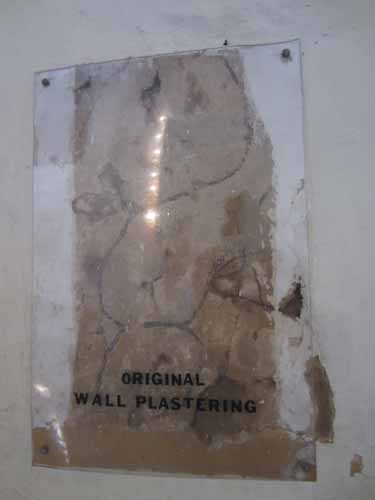
The original adobe walls and altar were built by Tlaxcalan Indians from Mexico under the direction of Franciscan Padres around 1610.

Around 1830, a new 3-tiered tower was added. But the top two were blown down in a violent windstorm in 1872.
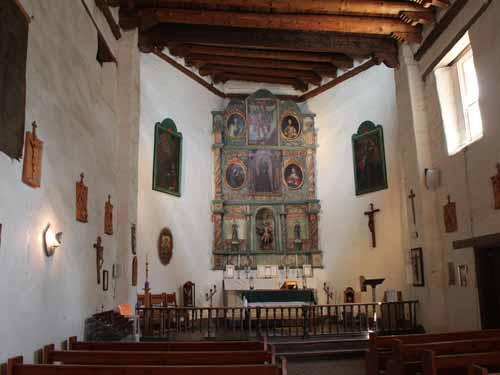
The reredos (altar screen) was restored in 1955 (a majority had been painted over with six coats of house paint). It was carved in Mexico in the 1600's and brought here by the missionaries.

The figure on the left is San Miguel, the patron saint of the mission church.
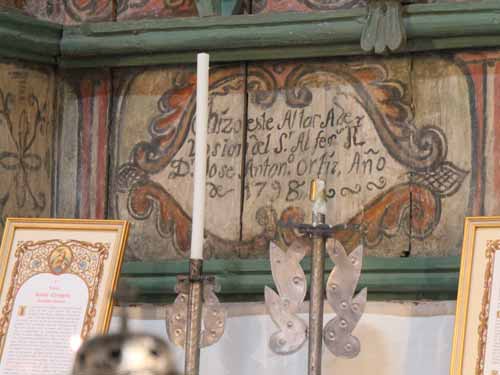
An inscription in the corner reads 1798.

One of the ceiling beams. Somewhere is carved the date 1710.


A milagro (Spanish for 'miracle') is a metal charms commonly held as a personal amulet. It can be presented at a church or shrine as an offering to God or a particular saint (ether as a request or in thanks).

Often the item will reflect the nature of the person's problem.

The Restored Mission 1858, by Cal Dunn. Note the higher tower.
We popped in just briefly at the Palace of the Governors (El Palacio Real). Built in 1609, it is the oldest public building in the US, and served as the seat of the Spanish, Mexican and American governments.


The building was lined with endless vendors.

The Mexican governor's office. Furnishings were often sparse, even for appointed officials who lived in the royal houses. Travel was arduous and infrequent between here and Mexico until 1821 (when the Santa Fe Trail brought new goods into the area).

Wooden candelabras were used before tin became widely available.
We refueled in a small chocolate shop called C.G. Higgins. We had two chocolate truffles: one was an incredibly delicious 'traditional cinnamon' and the other was 'red and green chili' where the spiciness showed up in the aftertaste. Amazing!
